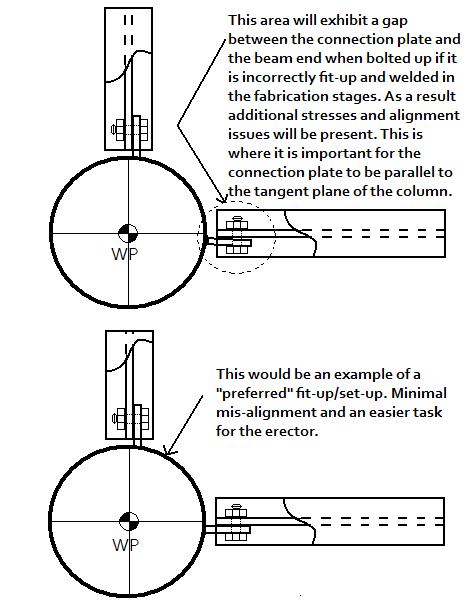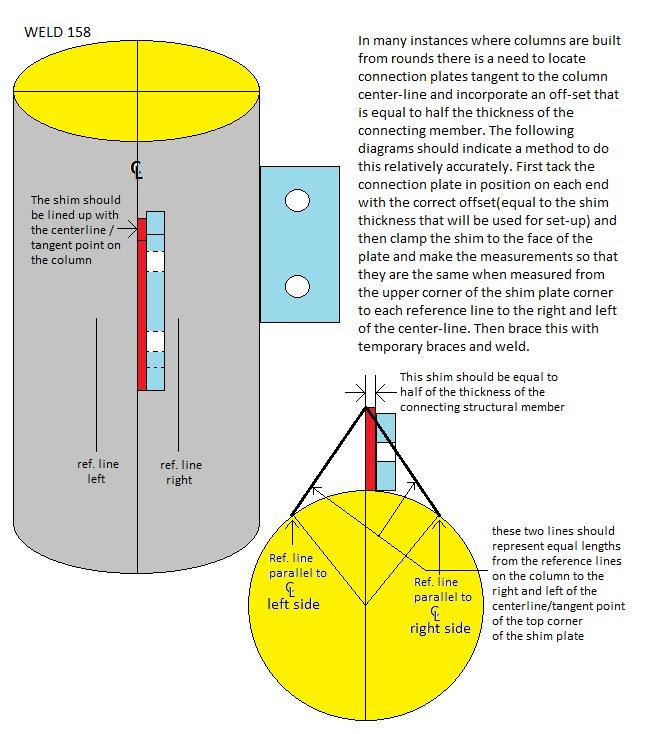Hello folks, for many this might just be a matter of "eye-balling-it" and welding it up. A lot of the time that is possibly all that is required. But for other instances there may just be a need to be a lot more precise than the Kentucky Windage method.
There are also other methods to do this as well, however, many of these require carefully anchoring the column so that it can't move while levels, magnetic protractors, or other tools are used to perform the set-up.
With the method included in this diagram you can have the column located any which way and it doesn't necessarily have to be level, plumb, or anything else specific. I am hopeful that the diagram explains this in enough detail to be properly understood. Best regards, Allan
I've always used a centering head. This is a very interesting alternative. I'll add it to my arsenal. Thanks Allan!
Hello Scott, I've used the centering head to locate the position of the connection plates, but finding the tangent plane, keeping the face of the connection plate parallel to this plane, and taking into account the offset distance is not so readily done with just the centering head. Thanks for the comments and best regards, Allan
The more I lurk on this BBS the more I realize what goes on in some of these jobs. Lots more than I realized, keep it up!
Hello everyone, I just wanted to add a little something more to this example/scenario. When the fabricated parts are of considerable heft and weight there is less margin for error. If you are attaching clips to columns that are in the 1/4" to 1/2" range there can be considerable mis-alignment without causing issues that cannot be overcome by simply waiting until enough parts are in place and then torqueing /tightening everything so that it can be brought into line.
When the parts are sizeable enough there isn't enough give in them to allow for the gaps to be taken up and provide for full engagement of the connection points. This can be a recipe for disaster at the extreme end of the scale and at the other end, an example of poor craftsmanship and heartache for the erector as assembly is taking place.
If an inspector is doing his/her job properly they will call for corrections(as they should) and obviously this will cause financial hardship for the fabricator, lost time for the erector(and possibly an additional paycheck for the erector to make the necessary corrections if the fabricator cannot make them themselves). In any case, the scenario is not going to be ideal and that is why fabricators/fitters/welders are all responsible to take reasonable care to see that they use sufficient methods to insure accuracy in their work.
I have included another diagram to illustrate the description that I have laid out here. I hope that it makes sense. I am also pretty sure that there are many of you out there that have seen these very same instances on jobsites in many places where you have worked. I mainly bring these sorts of things up to provide a little bit of awareness for those of us who might just be getting a start in these awesome trades. Best regards, Allan



